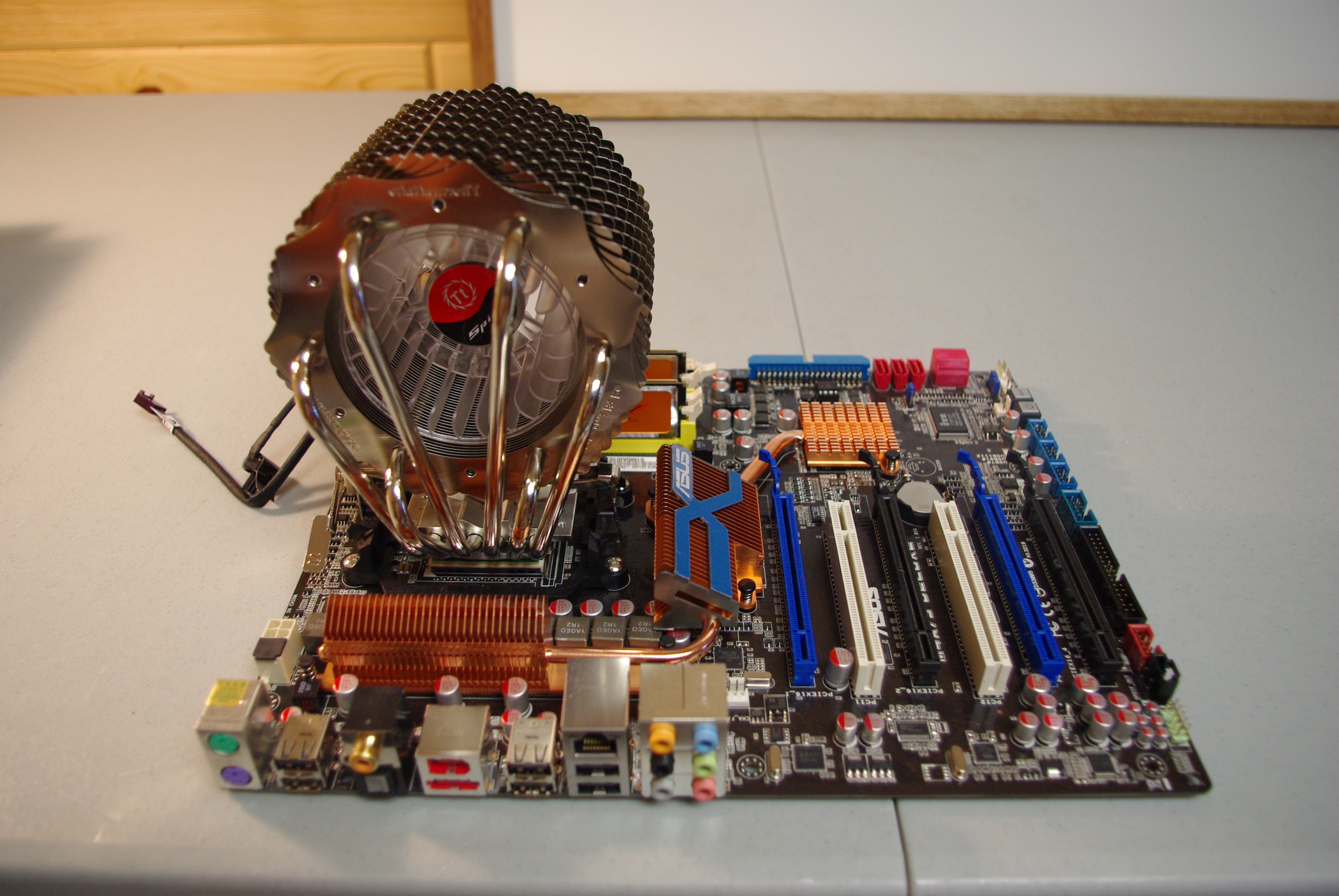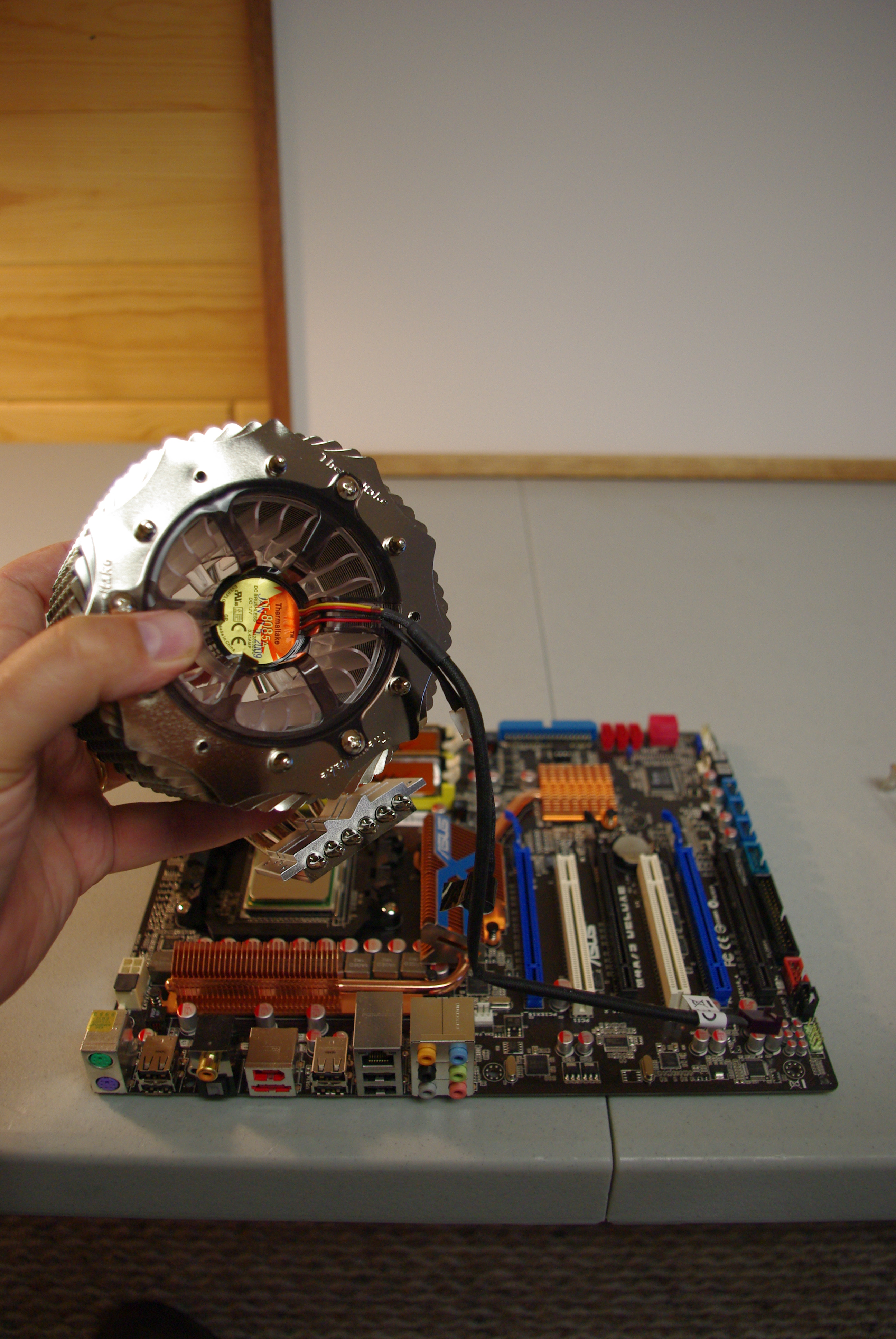Setting Up Your First 64-Bit Digital Audio Workstation
Design The PC
If you’re like me, you want to get started on a build right away. You might decide once you have the motherboard, RAM, and CPU that it is time to assemble. For this build, I recommend planning out the parts and then assembling the PC all at once. For example, as you do the build, you will want to tie down any loose cables that could flick into a fan and make a horrendous racket. A clean and efficient build will help you make clean and efficient recordings.
I know solid-state drives (SSDs) add a major expense. I’m also not sure if the speed differences are so monumental that audio recordings turn out better with an SSD than they do with traditional hard drives. However, I still recommend them for one distinct reason: they are quieter. A recording of that amazing lick on your Taylor 310 acoustic will sound better if the hard disk is not spinning as your recording software struggles to keep up. A small SSD takes up less room in the case, which means better airflow and running the fans a notch slower. You can always use a 64 GB SSD drive for primary recordings and then move them off to an external network drive connected over a Gigabit Ethernet connection to your router in the other room. Remember, be ruthless about reducing noise.
Next, make sure you choose low-latency RAM. Usually, you have to inspect the parts listing or ask the vendor to make sure it is fast enough for audio recordings. Go ahead and max out RAM and get as much as you can afford. If your recording software of choice does not support the 64-bit version of Vista (which allows you to access more RAM), it soon will.
The example here is the PreSonus gear I use, including a rack-mounted PreSonus FireStudio. At press time, the 64-bit drivers were not quite available, but they will be in the next few weeks. Once the new drivers come out, I will likely do a re-test to find out if the latency is lower in Vista.
Case design is critical. You’ll want to look for a standard ATX case, not one that is designed for servers. I used the Thermaltake Element S because my contact there assured me it was one of the vendor’s quietest cases with a 23 cm fan that runs at about 25 dBA. But you can find quieter cases, of course, and I also experimented with turning off all the fans entirely.
I would avoid water-cooling solutions because they tend to make a slight gurgling sound on occasion. Once your system is built, use the age-old troubleshooting technique of turning off all fans, seeing if your system crashes, turning on one fan if it does, turning on another fan, etc.
Next, make sure you choose a graphics card that has passive cooling. Often, the loudest component in a case is the GPU. I chose the XFX Radeon HD 4650, which runs completely silent without a fan. Contrary to what you might think, the CPU you install should not be a powerhouse that requires a lot of cooling and has a high TDP rating. I used an older AMD Athlon X2 5050e with a 2.6 GHz clock speed and a 45 W TDP. It’s still plenty fast for audio recording, although you won’t be lighting it up in Fallout 3 with this rig.
Get Tom's Hardware's best news and in-depth reviews, straight to your inbox.
The motherboard you pick should have an on-board FireWire port for audio-interface connections, such as the PreSonus FireStudio. I used an Asus M4A79. Of course, you can buy a FireWire card, but it’s just another electrical component that can cause problems in low-latency recording. In short, the fewer components you use the better for an audio workstation.
Would a board with DDR3 memory help an audio workstation build? Maybe. In an effort to reduce latency for recording, I chose to go with an older motherboard and RAM and a low-wattage processor in order to avoid using any extra power on the PC and to keep the system as silent as possible. In fact, I ended up with a system that just has one fan running on the CPU without any crashes or problems.
Last, go with Windows Vista Ultimate 64-bit. You may be more inclined to choose Windows XP, but the truth is that Vista handles memory better than XP does in the sense that the software will record smoother onto the hard disk. At least that has been the case in my experience. Windows XP sometimes introduces minor blips and imperfections. Even if you are a Windows XP loyalist, the software companies that make recording software will build and test their wares on Vista more and more in the coming years.
Current page: Design The PC
Prev Page Build A 64-bit Audio Workstation Next Page Building The Workstation-
one-shot There are large HSFs designed for to be passively cooled. Have you thought of that as an option? You are running a CPU which doesn't draw much current and it could help to even lower the noise even more as that is your main concern, it seems. No fan should make less noise than A fan, even if that one fan is very quiet.Reply -
REAPER has a 64bit version that's quite lauded (as is the 32bit, for that matter).Reply
www.reaper.fm -
mitch074 what I find strange though, is the use of a non-real time OS for audio recording; Windows' sound system always introduces latency (when there's no latency, then it introduces clicks); on the other hand, there are optimized Linux distros dedicated to sound recording and processing, that cost nothing, that are 64-bit compatible, and thanks to a well tested kernel patch (I think it entered mainline a while ago) has zero latency: kernel allows real time access to sound hardware.Reply
You can also forget about disk problems with Linux, as it is and remains light years ahead of Windows in disk access - especially when using low latency file systems.
So, while your hardware choices are excellent, you cripple your system by using an inappropriate system. It's like putting a truck driver in command of a Formula 1 car: he may be used to drive powerful and costly machines with precision, but not THIS kind of machine. -
Totally agree with mitch074! I've used Ubuntu Studio (ubuntustudio.org) for 32bit audio processing. The (stable) latency I get with that system is unsurpassed (took me a few days to finetune the kernel for this result though...)Reply
-
mitch074 just to add something to my previous comment: while you mentioned Ubuntu 64-bit, do realize that the -rt kernel isn't installed by default; its use of PulseAudio (that plays the same role than Vista's current audio stack does) is a pain to configure... Not that it's impossible, but then you'd better look at 64 Studio (Debian-based 64-bit RT distribution) or at the very least Ubuntu Studio (which is already configured for audio use, with several drivers pre-built).Reply
More data at http://linux-sound.org/ (obviously) -
Hamsterabed Please examine your power supply bracket a little closer, if you look carefully you will notice 4 tabs sticking up upon both sides of the bracket. You may mount a SSD to these 2.5 inch slots instead of buying a separate one that will be in your air corridor.Reply -
> has zero latencyReply
That's bull - no system has zero latency - not even DSP-based ProTools.
All soundcard-hardware has at least 32 samples of latency.
Apart from that, you will achieve VERY low latency figures by carefully selecting the right PC, with the right add-on-hardware with Windows as well. And if you have the right card with the right drivers, you can even use that 32 sample latency (less than 1msec) for tracking.
Also IMHO 99% of all virtual instruments/effects existing are Win/OS X only, so you will not have the same range of tools to use when limiting yourself to Linux.
Dogmatic thinking is never smart. Use the right tool for the right job. Linux is (currently) IMHO not the right tool for DAW work (at least not if you want to work in a somewhat professional level) -
vivi22 to-pseAlso IMHO 99% of all virtual instruments/effects existing are Win/OS X only, so you will not have the same range of tools to use when limiting yourself to Linux.Reply
Have to agree with this. Linux isn't supported by the majority of major plug in makers, so if you use it you'd be pretty limited in what you had available in that area. I'd also rather not spend any more time dealing with getting drivers that run properly than I already do using Windows.
Anyway, the article seems like a good intro for those who may be new to building a DAW and it's nice to see Tom's put up an article not geared towards gamers or IT. I didn't think I'd ever see an article relating to music production on here so I appreciate the effort, but there are some things that I would have liked to see mentioned. For starters, Cubase isn't the only 64-bit recording program. Reaper was already mentioned in the comments, and Sonar was 64-bit before Cubase ever made the move. Might be some others that are or are moving to 64-bit, but those were the major ones when I was looking into a recording program last year.
Also, although I could understand going with a processor that doesn't require some pretty massive cooling when you're going to be recording real instruments or vocals in the same room as the PC, I wouldn't recommend deliberately limiting processing power if someone is working largely, or even completely with midi. Once you start throwing in some VST synths and effects, the processor can be taxed pretty easily. You can get around it by bouncing tracks to wav as you work on other parts, but it can be a pain when you want to edit multiple parts in real time. -
You have a nice rig there, would look at cleaning up the wiring though, its a bit messy in the pic!Reply
-
Ryun This was actually a very interesting article. It's a shame though, I wish you had taken more pictures of the audio hardware and audio connectors instead of the "stock" hardware. I don't really know much about audio hardware or even the theory to work with, so pictures of those would have helped immensely for a noob like myself.Reply

